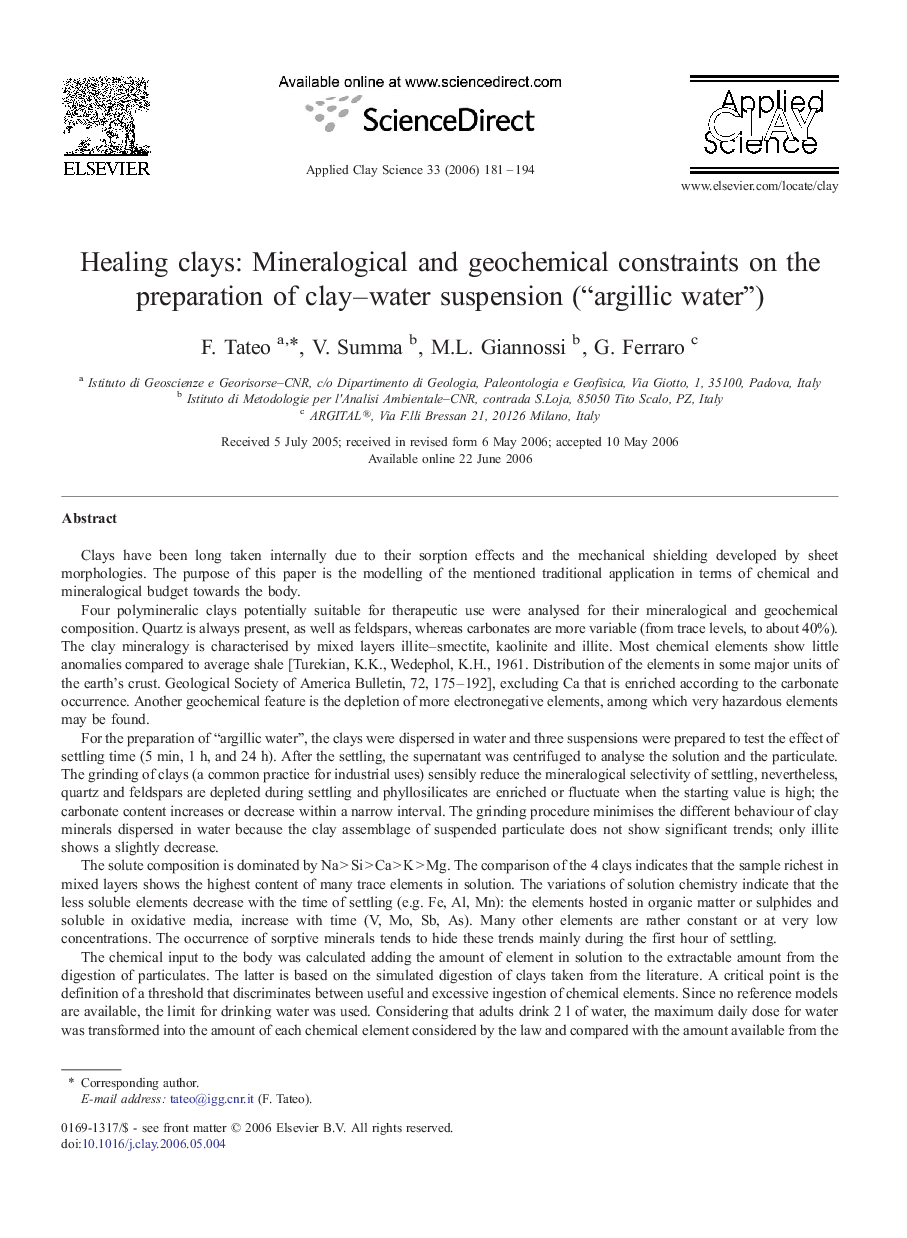| کد مقاله | کد نشریه | سال انتشار | مقاله انگلیسی | نسخه تمام متن |
|---|---|---|---|---|
| 1696520 | 1519139 | 2006 | 14 صفحه PDF | دانلود رایگان |

Clays have been long taken internally due to their sorption effects and the mechanical shielding developed by sheet morphologies. The purpose of this paper is the modelling of the mentioned traditional application in terms of chemical and mineralogical budget towards the body.Four polymineralic clays potentially suitable for therapeutic use were analysed for their mineralogical and geochemical composition. Quartz is always present, as well as feldspars, whereas carbonates are more variable (from trace levels, to about 40%). The clay mineralogy is characterised by mixed layers illite–smectite, kaolinite and illite. Most chemical elements show little anomalies compared to average shale [Turekian, K.K., Wedephol, K.H., 1961. Distribution of the elements in some major units of the earth's crust. Geological Society of America Bulletin, 72, 175–192], excluding Ca that is enriched according to the carbonate occurrence. Another geochemical feature is the depletion of more electronegative elements, among which very hazardous elements may be found.For the preparation of “argillic water”, the clays were dispersed in water and three suspensions were prepared to test the effect of settling time (5 min, 1 h, and 24 h). After the settling, the supernatant was centrifuged to analyse the solution and the particulate. The grinding of clays (a common practice for industrial uses) sensibly reduce the mineralogical selectivity of settling, nevertheless, quartz and feldspars are depleted during settling and phyllosilicates are enriched or fluctuate when the starting value is high; the carbonate content increases or decrease within a narrow interval. The grinding procedure minimises the different behaviour of clay minerals dispersed in water because the clay assemblage of suspended particulate does not show significant trends; only illite shows a slightly decrease.The solute composition is dominated by Na > Si > Ca > K > Mg. The comparison of the 4 clays indicates that the sample richest in mixed layers shows the highest content of many trace elements in solution. The variations of solution chemistry indicate that the less soluble elements decrease with the time of settling (e.g. Fe, Al, Mn): the elements hosted in organic matter or sulphides and soluble in oxidative media, increase with time (V, Mo, Sb, As). Many other elements are rather constant or at very low concentrations. The occurrence of sorptive minerals tends to hide these trends mainly during the first hour of settling.The chemical input to the body was calculated adding the amount of element in solution to the extractable amount from the digestion of particulates. The latter is based on the simulated digestion of clays taken from the literature. A critical point is the definition of a threshold that discriminates between useful and excessive ingestion of chemical elements. Since no reference models are available, the limit for drinking water was used. Considering that adults drink 2 l of water, the maximum daily dose for water was transformed into the amount of each chemical element considered by the law and compared with the amount available from the preparation of “argillic water”. Based on these results, the settling of clays can be tuned in order to emphasise the desired composition or to minimise side effects.
Journal: Applied Clay Science - Volume 33, Issues 3–4, August 2006, Pages 181–194